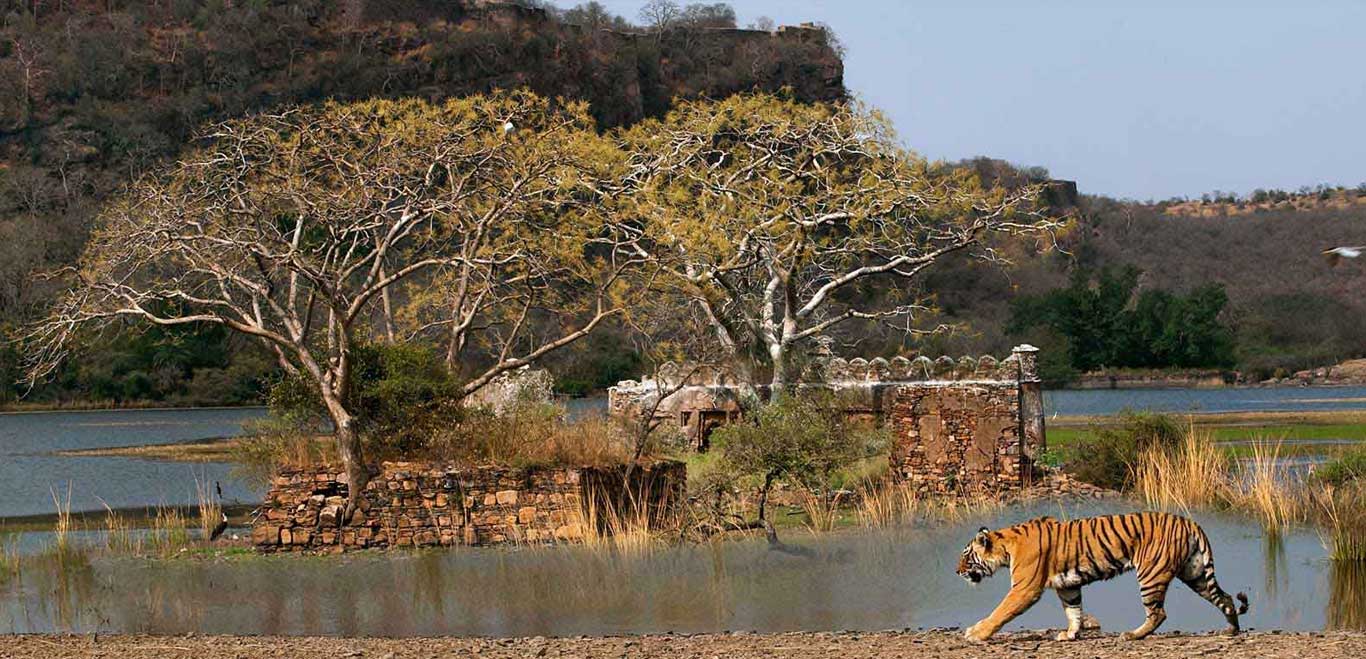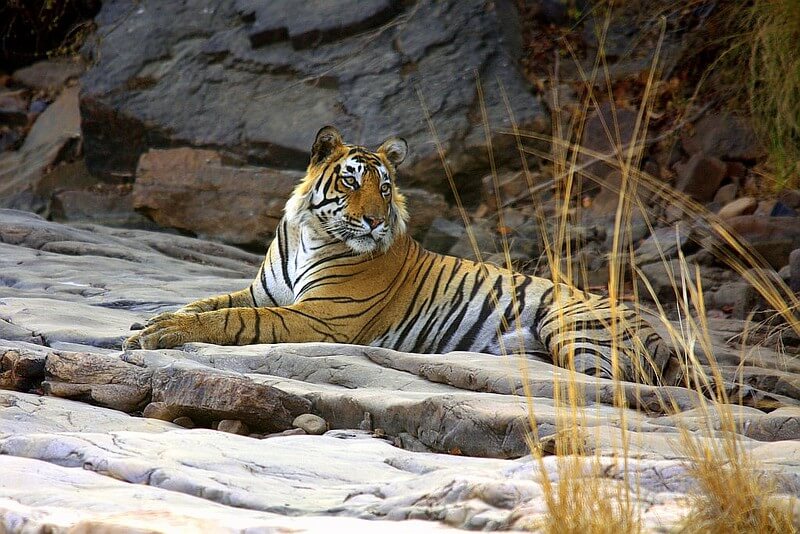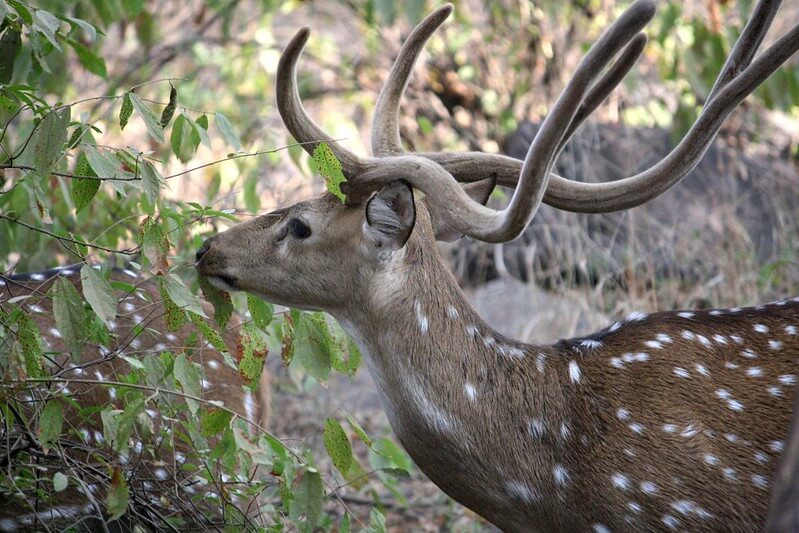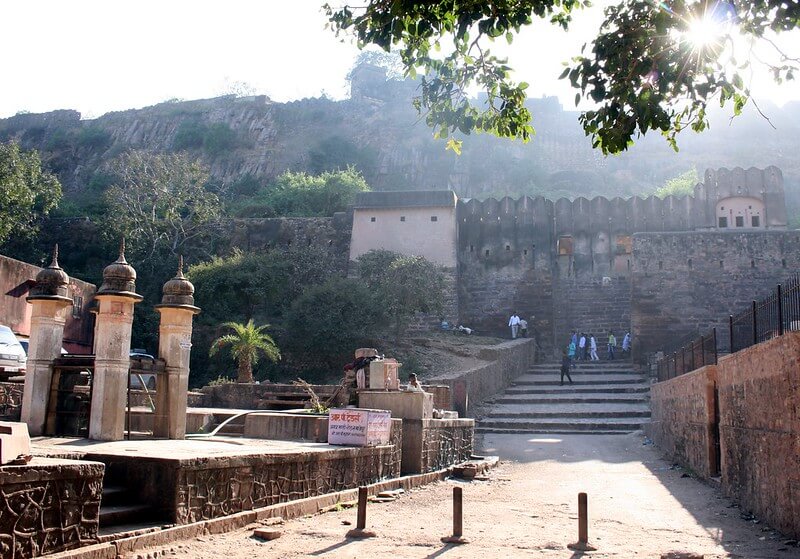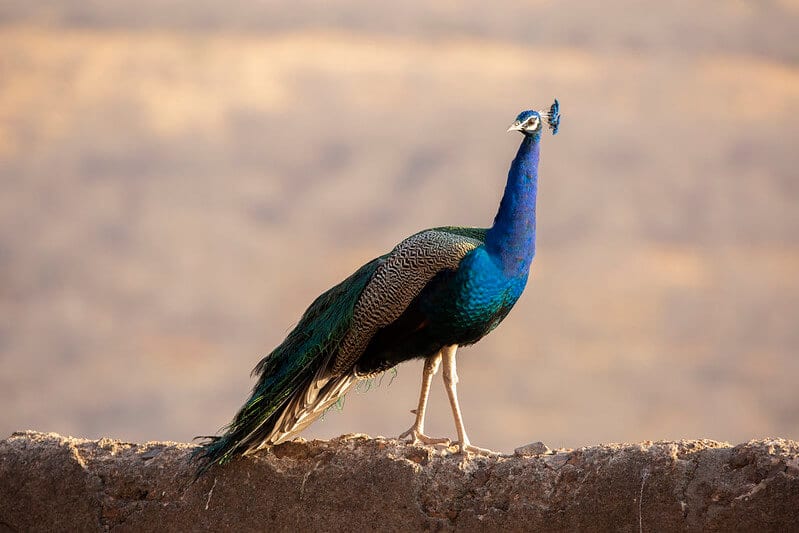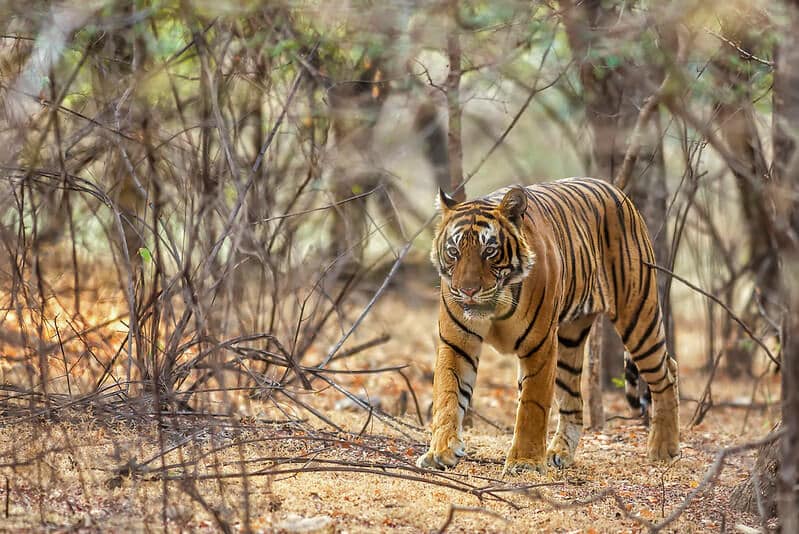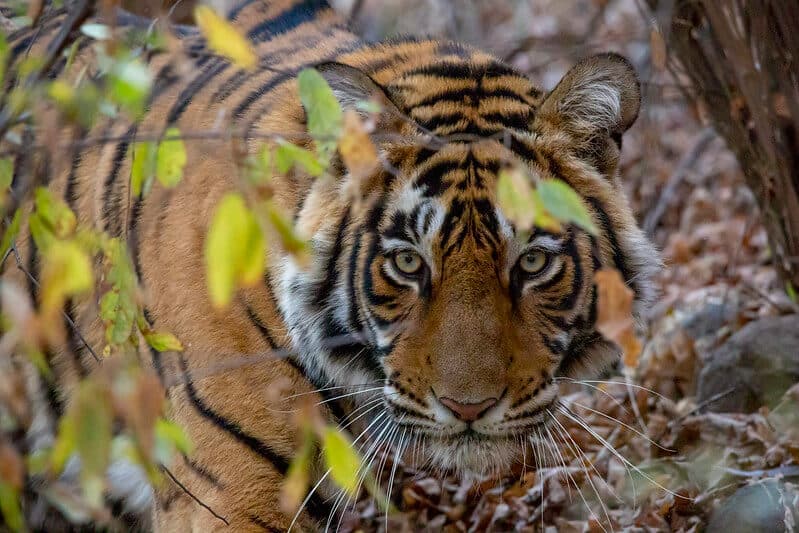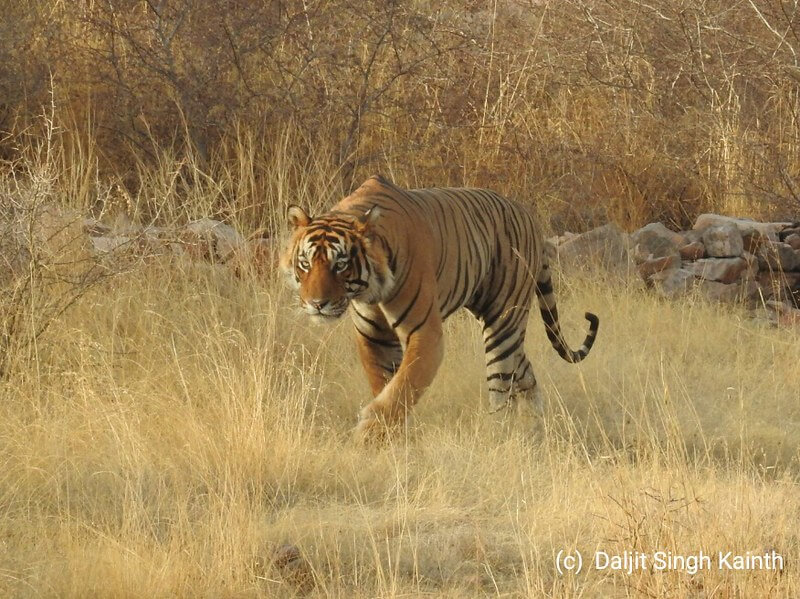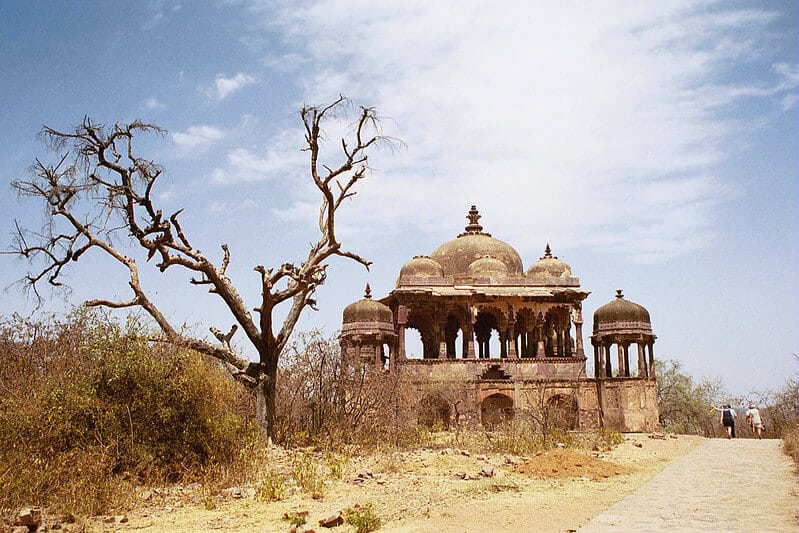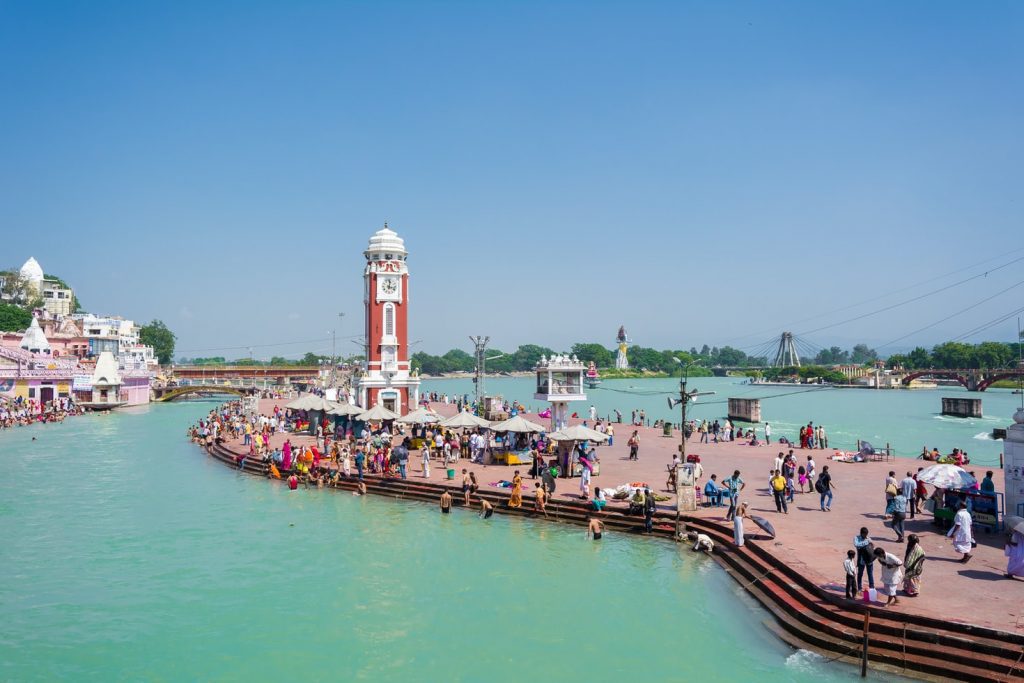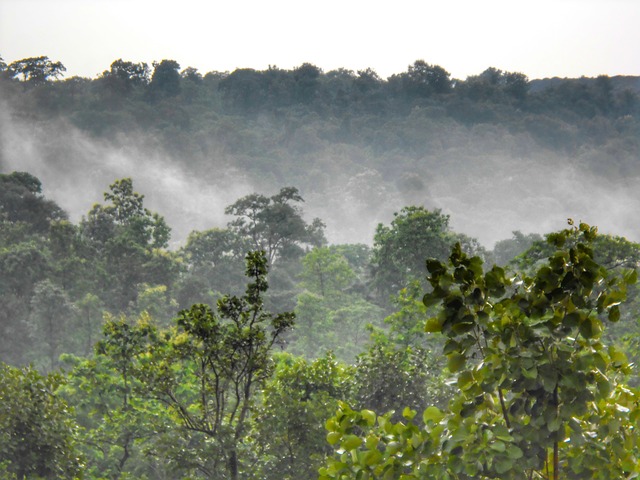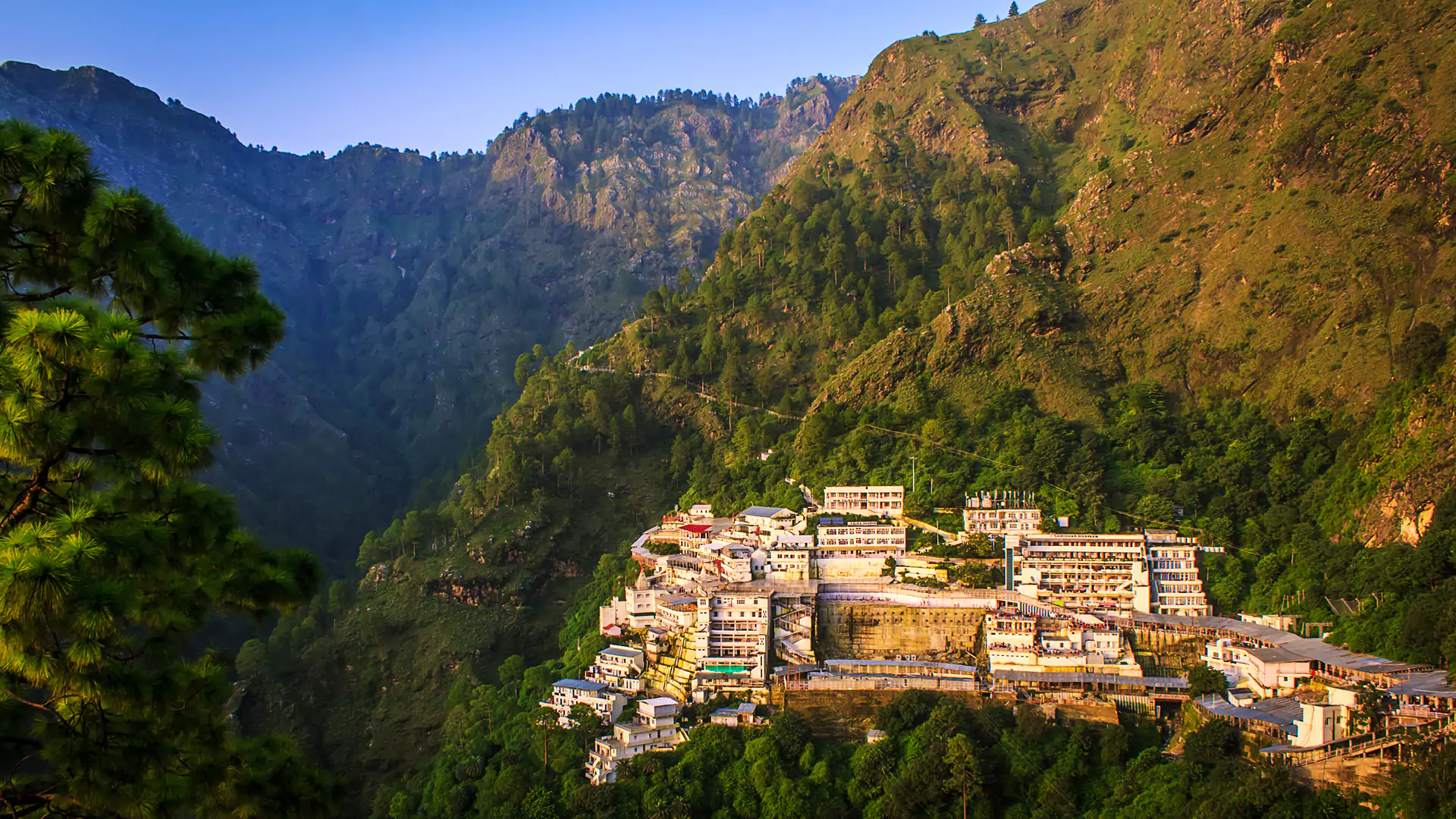Located at the junction of the Aravali and Vindhya Hill Ranges, Ranthambore National Park is one of the most picturesque wildlife parks of India. It is home to some majestic big cats like the Tiger, Leopard, Leopard Cat, Desert Cat and many more.
Table of Contents
- About Ranthambore National Park
- Ranthambore National Park Location
- Ranthambore National Park Facts
- Flora in Ranthambore National Park
- Fauna in Ranthambore National Park
- Ranthambore National Park Safari
- How to Reach Ranthambore National Park
- Things to do in Ranthambore National Park
- Ranthambore national park entry fee
- Best time to visit Ranthambore National Park
- Places to visit near Ranthambore national park
- Resorts & Hotels to stay in Ranthambore
About Ranthambore National Park
The Ranthambore National Park was established as Sawai Madhopur Game Sanctuary in 1955 and converted into a National Park in 1980. This conservation area sprawls across 1334 square kilometers and harbors grassy meadows and deciduous trees along with a wide variety of wildlife.
Ranthambore National Park Location
Ranthambore National Park is located at the junction of the Aravali and Vindhya Hill Ranges. It is around 13-14 km from the city of Sawai Madhopur and 190 km from Jaipur in Rajasthan. A road trip from Jaipur to Ranthambore is guaranteed to delight tourists with its diverse landscapes and rustic sorroundings.
Ranthambore National Park Facts
Here are some important facts about the Ranthambore national park:
- The park is named after Ranthambore Fort that was built during the 10th century. It stands at a height of around 700 feet and has three stone temples inside its walls dedicated to Lord Ganesha, Lord Shiva, and Ramlalji.
- The park has three lakes – Padam Lake, Raj-Bag Lake, and Malik Lake.
- The second-largest Banyan tree in India is located near Padam Lake.
- It is believed that Princess Padmavati bathed and committed Sati at this lake.
- The national park has nearly 300 species of vegetation and various species of animals.
Flora in Ranthambore National Park
The most dominant plant in the park is the Dhok. It constitutes more than 75% of the vegetation in the park. There are various shrubs and that constitute major food for many animals. Other trees in the park are Banyan, Pipal, and Neem. You can also find numerous fruit trees like Mango, Imli, Jamun, etc. It also has a wide variety of flowering trees and shrubs.
Fauna in Ranthambore National Park
The Ranthambore National Park is home to some majestic big cats like the Tiger, Leopard, Leopard Cat, Desert Cat, Jungle Cat, Caracal, and Fishing Cat. The Ranthambore national park tiger stands at the top of the food chain in the region. Other Ranthambore national park animals include predators like Jackal, Striped Hyena, Desert Fox, Crocodile, etc., and animals like Chital, Sambhar Deer, Nilgai, Chinkara, etc. There are also more than 300 species of birds that reside and migrate to the Ranthambore Sanctuary.
About Ranthambore National Park Safari
The Ranthambore Tiger Safari is one of the most popular things to do in this wildlife sanctuary. The Ranthambore Tiger Sanctuary is, in fact, one of the most visited tiger reserves in India. A safari is the only option available to travelers to spot the Tiger among other animals and witness the mesmerizing flora of the region. Here are some details that you need to know about Ranthambore safari tours.
There are two options available while booking a Ranthambore Safari:
- Jeep Safari – A 6-seater, four-wheeled Gypsy that takes you through the wilderness to experience nature. Being a smaller vehicle, the Gypsy can traverse narrow trails and increase the chances of spotting a tiger and other elusive animals and birds.
- Canter Safari – A canter is a 20-seater vehicle that is a good option for larger families and groups.
Ranthambore National Park Safari Booking
Booking for Ranthambore safari is managed by the forest department of the Government of Rajasthan. You can book online from the website of the forest department or offline at the office of the national park. You can choose between half-day and full-day safaris in certain zones.
Zones in Jungle Safari, Ranthambore
There are ten zones in the national park and not all zones are open for tourists. Below is a description of the various zones:
- Zone 1 – More of a buffer zone and home to Tiger-39 and Tiger-57
- The Zone 2 – Many tiger sightings have been reported from this zone since there are water holes here
- Zone 3 – Padam Lake falls in this zone where big cats can be frequently spotted.
- The Zone 4 – This zone is home to the most famous tigress of Ranthambore – Machli
- Zone 5 – Various big cats can be spotted in this zone like T-25, T-28, T-17, T-74, and T-75
- Zone 6 – This zone has more open grasslands with huge mountains in the backdrop. You might get a chance to spot the rare red-headed vulture here.
- The Zone 7 – Home to Tiger-8 and Tiger-34
- Zone 8 – Very similar to Zone 7. The zone has a slightly different landscape compared to Zone 7 though.
- Zone 9 – This zone is around 45 minutes away from the Ranthambore tiger reserve. It is home to Tiger-42 (Fateh), an aggressive male tiger who is known to chase the vehicles of the forest department.
- Zone 10 – A good place to spot T-13, T-42, and T-43
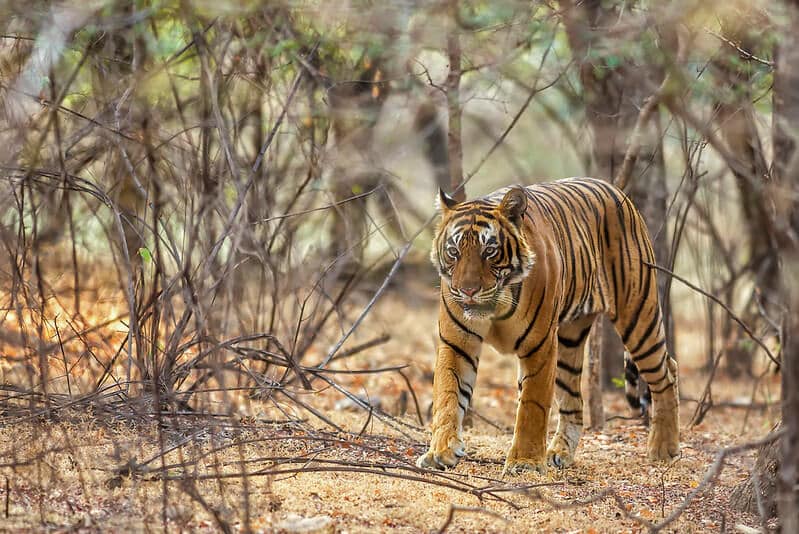
Ranthambore safari timings
If you are looking for a Ranthambore safari booking, then you must know the best seasons and timings to visit the sanctuary. The park is closed during the monsoon months of July to September. The timings of the safari for the rest of the year are as follows:
- October 1 to 30: 6.30-10 am and 2.30-6 pm
- November 1 to January 31: 7-10.30 am and 2-5.30 pm
- February 1 to March 31: 6.30-10 am and 2.30-6 pm
- April 1 to May 15: 6-9.30 am and 3-6.30 pm
- May 15 to June 30: 6-9.30 am and 3.30-7 pm
Ranthambore National Park Safari Price
The safari price is different for Indians and foreigners. Further, it includes various components like the entry fee to the park, vehicle hire costs, guide fees, etc. Additionally, the Rajasthan Government increases the safari cost every year by 10%.
The safari prices as of 2021 is as follows:
- Entry fee to the park:
- Indians: Rs.140
- Foreigners: Rs.1070
- Gypsy Hire and Guide Fee: Rs.1075 per person
How to Reach Ranthambore National Park
The park is connected to all important cities via a network of highways and well-maintained roads. Here are some ways to travel to this heaven for wildlife:
- By Train – Sawai Madhopur railway station is the closest railway station to the town. The train station is at a distance of around 14 km from the national park. You can book a cab from Sawai Madhopur to Ranthambore national park and get there within 30 minutes.
- By Flight – The nearest airport to Ranthambore forest is in Jaipur. The Jaipur International Airport has flights from most major cities in India and around the world. It is at a distance of around 185 km from the park. You can book a cab from Jaipur Airport to Ranthambore and reach within 3-4 hours.
- By Road – You can reach the national park from most major cities in India with ease. Here is the distance and travel time from some nearby cities:
- Jaipur – 185-190 km and a travel time of 3-4 hours
- Delhi – 400 km and a travel time of around 8 hours
- Agra – 300 km and a travel time of around 5-6 hours
- Gwalior – 300 km and a travel time of 5-6 hours
- Udaipur – 415 km and a travel time of 7-8 hours
- Bhopal – 500 km and a travel time of 9-10 hours
Things to do in Ranthambore National Park
- Take the fabled jeep safari and catch a glimpse of the Royal Bengal Tiger, and various other animals.
- Hike to the Ranthambore Fort or the Ranthambore ka Kila.
- Take a canter safari and enjoy wildlife as a part of a large group.
- Take a stroll at Lakarda and Anantpura and try to spot the elusive Indian striped hyenas and porcupines.
- Visit the Ranthambore School of Art and witness some amazing local art.
- The forests are a paradise for bird lovers too. Spend a relaxed afternoon spotting some beautiful and rare, resident and migratory birds.
- Visit the Kachida valley located slightly on the outskirts. It offers some breathtaking views of the landscape that the region has to offer.
- Take a hot air balloon ride over the area and get a bird’s eye view of the beautiful region.
- Take a stroll around the Padam Lake.
- Explore Jogi Mahal built by the royals of Jaipur.
[Also Read: The Great Rajasthan roadtrip – 11 days in Royal Rajasthan]
Best time to visit Ranthambore National Park
The park is closed during the monsoon months of July to September. If tiger spotting is your primary goal, then you should try visiting the park during the summer months of April to June. While the temperatures can soar up to 40 degrees C, the scarcity of water gets most animals out in the open. January to March is usually preferred by most travelers since the weather is relatively pleasant and animal sightings are on the increase.
Ranthambore National Park Timings
The sanctuary is closed from July to September due to the monsoon. For the rest of the year, the park is open all through the week. The safari timings are as follows:
- October 1 to 30: 6.30-10 am and 2.30-6 pm
- November 1 to January 31: 7-10.30 am and 2-5.30 pm
- February 1 to March 31: 6.30-10 am and 2.30-6 pm
- April 1 to May 15: 6-9.30 am and 3-6.30 pm
- May 15 to June 30: 6-9.30 am and 3.30-7 pm
Ranthambore national park entry fee
The entry fee is Rs.140 for Indians and Rs.1070 for foreigners. The Gypsy and guide charges are Rs.1075 per person.
Places to visit near Ranthambore national park
Here are some popular tourist attractions in and around Ranthambore:
Sawai Madhopur
It is a place steeped in history and has a lot to offer to all kinds of tourists.
How to Reach
The distance from Sawai Madhopur is around 14 km. You can hire a taxi from Sawai Madhopur and reach there in no time.
Best Time to Visit
The best time to visit Sawai Madhopur is during the months of October to April.
Bharatpur
Famous for Keoladeo National Park, a UNESCO World Heritage Site.
How to Reach
Bharatpur is located at a distance of around 245 km. Alternatively, Jaipur is the closest big city near Ranthambore, situated at around 190 kms. You can rent a car from Jaipur and reach Sawai Madhopur in about 5 hours.
Best time to visit
The best time to visit Bharatpur is from August to February.
Hotels & Resorts to stay in Ranthambore
Here is a quick look at some resorts near the National Park:
- WelcomHeritage Mount Valley Resort Ranthambore, Ranthambore Road – a calm and rejuvenating resort in Ranthambore
- Tree Of Life Kipling Jungle Lodge, Charoda Road – the best resort in Ranthambore based on traveler reviews
- The Baagh Ananta Elite, Village Kutalpura – one of the best luxury resorts in Ranthambore
- The Sher Garh Resort, Khilchipur – The SherGarh is a royal heritage resort just 1.5 km from the national park
- Ranthambhore Heritage Haveli, Khilchipur – a good, heritage-led option to stay close to the wildlife.
- Sawai Vilas Ranthambore, Near Ranthambore Park – a Ranthambore villa that you wouldn’t want to miss
- Raj Palace Ranthambore, Near Ranthambore Park – a luxurious option for a memorable Ranthambore stay
- Sujan Sher Bagh Ranthambore, Khiljipour – a tented camp for Ranthambore camping
Last Updated on February 2, 2024 by
